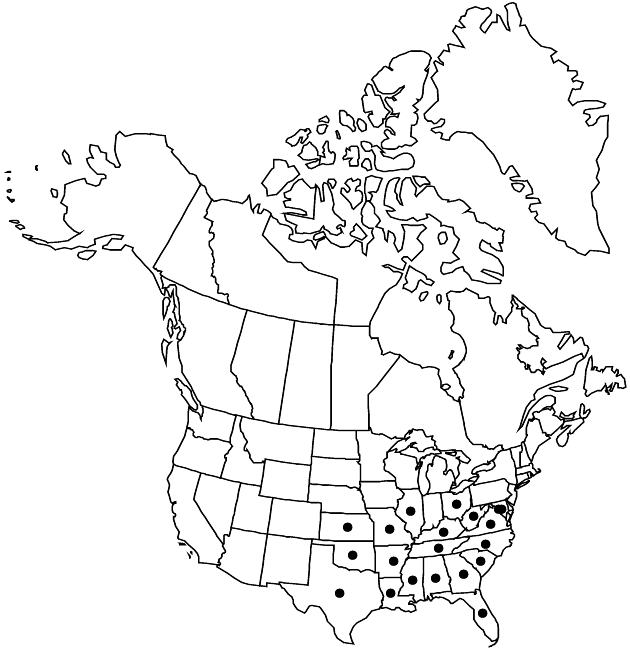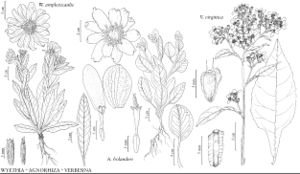Verbesina virginica
Sp. Pl. 2: 901. 1753.
Plants (50–) 100–250+ cm (perennating bases ± erect, internodes winged, at least proximal). Leaves all or mostly alternate (proximal sometimes opposite); blades lanceovate or lance-elliptic to lance-linear, 5–12 (–22+) × 1–6 (–12+) cm, sometimes pinnately lobed, bases ± cuneate, ultimate margins usually coarsely toothed to subentire, sometimes sinuate, apices acute, faces ± scabrellous to strigillose. Heads (20–) 60–100+ in corymbiform to paniculiform arrays. Involucres ± obconic to turbinate, 3–5 mm diam. Phyllaries 8–12+ in 1–2 series, ± erect, spatulate to oblanceolate, 2.5–5 (–7) mm. Ray-florets (1–) 2–3 (–7); laminae 3–4 (–7+) mm. Disc-florets 8–12 (–15); corollas ochroleucous or white. Cypselae dark-brown to blackish, oblanceolate, 3.5–5+ mm, faces ± scabrellous; pappi 1.5–3+ mm. 2n = 32, 34.
Phenology: Flowering (Jul–)Sep–Oct(–Dec).
Habitat: Bottomlands, flood plains, thickets, borders of woodlands, disturbed sites
Elevation: 10–300 m
Distribution

Ala., Ark., D.C., Fla., Ga., Ill., Kans., Ky., La., Md., Miss., Mo., N.C., Ohio, Okla., S.C., Tenn., Tex., Va., W.Va.
Discussion
Plants of Verbesina virginica from near the Atlantic Coast with margins of some or most leaf blades sinuate to pinnately 3–5(–7+)-lobed have been called V. laciniata or V. virginica var. laciniata.
Selected References
None.
Lower Taxa
"broader" is not a number.
